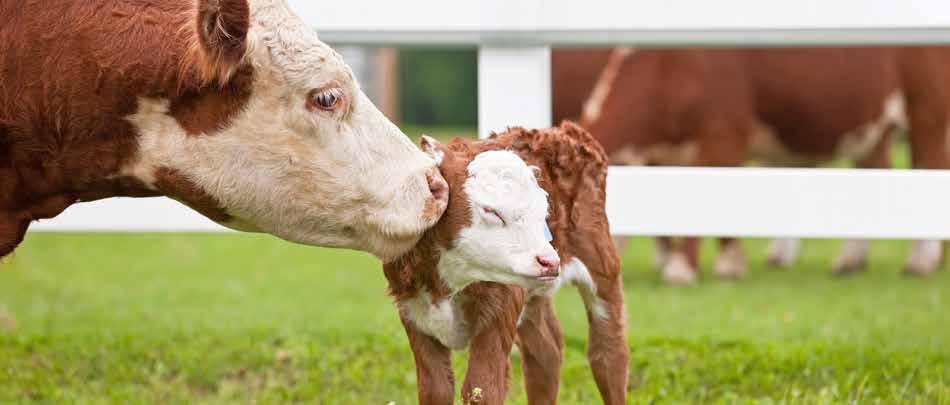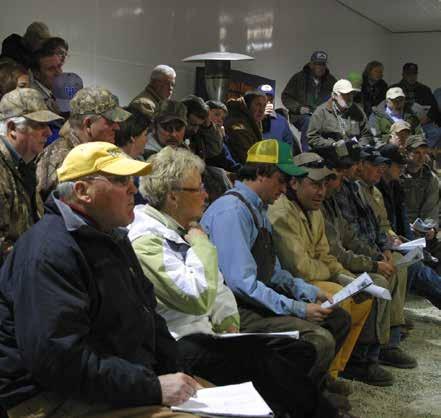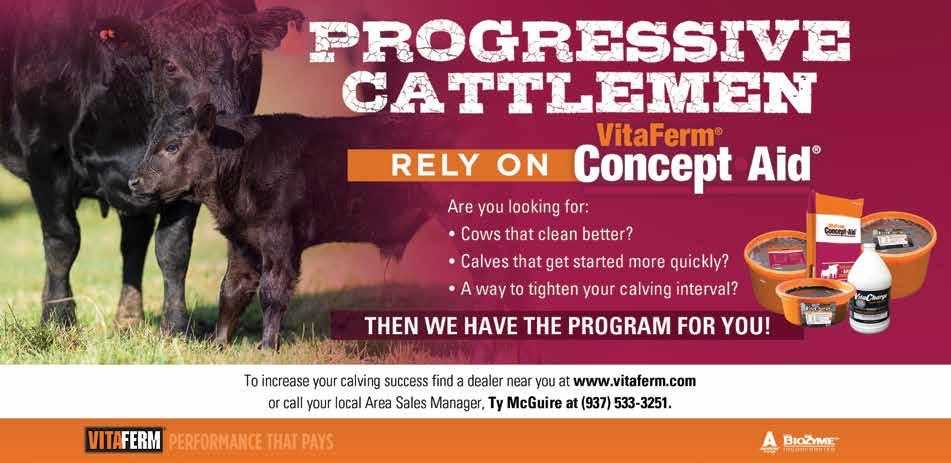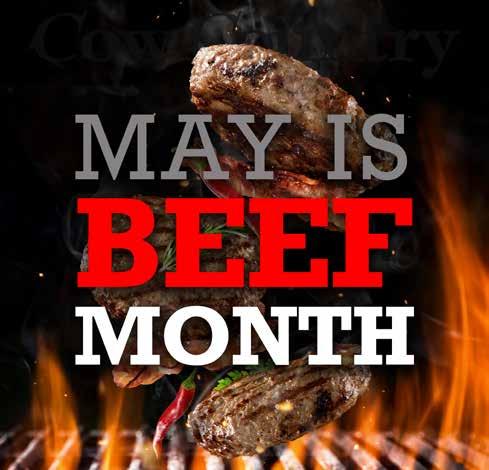
9 minute read
Vaccinations for the Cow-Calf Operation Dr. Katie VanValin: Sometimes We Need To Sweat the Small Stuff
SOMETIMES WE NEED TO SWEAT THE SMALL STUFF
KATIE VANVALIN
Associate Extension Professor, University of Kentucky
“Don’t sweat the small stuff.” I can’t remember if that is a phrase my grandpa used word for word, but I do know it’s how he lived his life. My grandpa ran a typical Kentucky commercial cow-calf operation along with the help of his two sons’ up until the physical demands of the farm caught up to him in the late 90’s. After the last of the cows were sold his days were spent “not sweating the small stuff”, while sipping coffee and reading the newspaper on his front porch swing. In the summers as a child, I’d join him on that porch swing, sip some lemonade, and ask Grandpa to tell me stories about his cows and the occasional horse or two that once called our family farm in Warren county, KY home. While we could all use a little dose of “not sweating the small stuff”, sometimes in cattle production the small things are worth sweating over…just a little anyways. My favorite small thing to sweat over when it comes to cattle nutrition is minerals. I first got interested in mineral nutrition as a student when I realized just how little mineral is actually consumed, compared to other nutrients. However, if something is amiss in the mineral program it may not matter what the energy and protein look like in the diet, there can be trouble. Although Kentucky is blessed with a phenomenal forage base with which to raise cattle, it didn’t come with a perfectly balanced mineral profile. Luckily this is a problem with an easy and relatively inexpensive solution. In the grand scheme of expenses in a cattle operation, mineral can be relatively small, but cutting corners can create bigger problems. Cattle in Kentucky are at risk of developing copper and selenium deficiencies, because these two minerals are often deficient in our forage base. Furthermore with ~75% of the cowherd being spring calving, seasonal bouts with magnesium deficiency resulting in grass tetany are also a concern. I have worked with producers who have lost cattle due in part to an inadequate mineral program. Sometimes cattle can get along okay with a mineral deficiency, until something happens resulting in an increased demand for that mineral. For example, I have seen cow herds where there is an inadequate mineral program resulting in one or more trace mineral deficiencies. Some of the cows will go on performing just fine, yet some cows or perhaps their calves will develop symptoms associated with mineral deficiencies, which can result in losing part of the herd. After doing a little digging it turns out that there might be a mineral deficiency, but also something else going on like internal parasites, or a bout with respiratory disease. Perhaps neither problem on their own would have resulted in losing the animal but taken together it becomes a perfect storm. It has been my experience that mineral deficiencies don’t just happen for no reason, typically the mineral program is inadequate. What does an inadequate mineral program look like? It might look like the best mineral money can buy and an empty mineral feeder that doesn’t get re-filled in a timely fashion. On the other hand, it might look like a product that is 97% salt with just a little bit of other minerals like calcium, phosphorus, copper, and selenium incorporated so that it can be marketed as a trace mineral supplement. While we are sweating over minerals, it’s not only important to select a good quality product, but to make sure it is fed as intended as well. In my mind, a good mineral program is one of the cheapest insurance policies you can purchase. On the other end of the spectrum, I recently worked with a producer who was looking to feed a co-product-based ration that was quite high in copper. In that situation, I was concerned about over-feeding copper, and was happy to find that the producer had selected a mineral supplement that included about 2/3 less copper than you would typically see in a mineral mix. This type of product is typically referred to as a “balancer” mineral, as it is meant to balance out a unique scenario. We see these types of products most often with high grain rations, or those incorporating distillery coproducts. The goal of a good mineral supplement is to fill in any holes that might be resulting from the rest of the diet, while not creating any additional problems such as over feeding specific minerals. Minerals are involved in every major process in the body. They
SPRING-CALVING COW HERD
Watch cows and calves closely. Save every calf (you can cull/sell them later). Calves can be identified while they are young and easy to handle. Commercial male calves should be castrated and implanted. Registered calves should be weighed at birth. Cows that have calved need to be on an adequate nutritional level to rebreed. Increase their feed after calving. Don’t let them lose body condition. Keep feeding them until pastures are adequate. Don’t “rush to grass” although it can be really tempting. Be sure that grass has accumulated enough growth to support the cow’s nutritional needs before depending solely upon it. Cows may walk the pastures looking for green grass instead of eating dry feed. This lush, watery grass is not adequate to support them. Keep them consuming dry feed until sufficient grass is available to sustain body condition. We’ve spent too much money keeping them in good condition to lose it now! Prevent grass tetany! Provide magnesium in the mineral mix until daytime temperatures are consistently above 60oF. Mineral supplement should be available at all times and contain a minimum of about 12 percent magnesium. Make sure that your mineral mix also contains adequate selenium, copper and zinc. You can ask your feed dealer about the UK Beef IRM High Magnesium Mineral. Make final selection of heifer replacements. Consider vaccinating with a modified-live BVD vaccine. Purchase replacement bulls at least 30 days prior to the start of the breeding season. Have herd bulls evaluated for breeding soundness (10-20% of bulls are questionable or unsatisfactory breeders). Get all bulls in proper condition for breeding. If you are going to use artificial insemination and/or estrus synchronization, make plans now and order needed supplies and semen. Prebreeding or “turn-out” working is usually scheduled for late April or May - between the end of calving season and before the start of the breeding season (while cows are open). Consult your veterinarian about vaccines and health products your herd needs. Make arrangements now for products needed and have handling facilities in good working order. Dehorn commercial calves before going to pasture.
FALL-CALVING HERD
Pregnancy check cows now and cull open ones at weaning. Re-implant feeders. Consult with your veterinarian about a preweaning working of the herd. You may let calves creep-graze wheat or rye, if it is available. Calves will benefit from extra feed until spring grass appears. Plan marketing strategy for feeder calves.
STOCKERS
Don’t go to pastures too soon, give plants some growing time. Then stock at two to three times the July rate and rotate rapidly. “Condition” purchased calves prior to grazing. They should be processed and fed a conditioning diet prior to being placed on pasture. You can also use this time to introduce them to electric fences which are used in rotational grazing. Provide a good mineral supplement which contains a rumen modifier (Rumensin, Bovatec, etc.) along with adequate levels of copper and selenium
GENERAL
We’ve made a muddy mess this winter, so be prepared to reseed bare spots. Make plans to improve hay feeding areas to avoid muddy conditions like we have faced this winter. Consider geotextile fabric with gravel or concrete feeding pads. Prepare for the grazing season. Check fences and make necessary repairs. Check your corral, too. Get everything ready to make high quality hay in May! Have equipment serviced and spare parts on hand. Order baler twine now. Be prepared to harvest an adequate supply of hay when you have the opportunity. Resupply the extra hay that you fed out of the barn. This past winter caused most producers to exhaust their hay supply, so it’s time to re-stock. Plan now for fly control ... decide what fly control program that you will use but don’t put insecticide eartags on cattle until fly population appears.
are involved in everything from growth, to lactation, to the immune system. Remember that mineral issues can be underlying waiting for the perfect storm, and that a good mineral supplement is like a good insurance policy. That is not to say that minerals are a cure all for other nutritional deficiencies or poor management, because they aren’t. However, the mineral program is important to providing a fully balanced diet to our cattle. I’ll leave you with one final thought to ponder (perhaps while sitting on the porch swing, if you get a minute). Is your mineral program working for your cattle production system? When was the last time you gave your mineral much thought? For more information about mineral supplements and recommendations please reach out to your local county extension office.
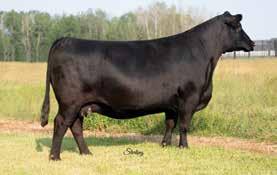
WF/RCC Henrietta Pride 2251-Reg 17903114- Denver x EXAR Henrietta Pride 5162. Awesome and consistent Donor. Sells due To SAV Rainfall. Top 10% WW, YW, $C. Daughter also sells! HCC Blackcap 1708. Reg#19081720. Picture perfect female with a fall heifer calf by E&B Plus One. Safe A.I. to GAR Greater Good. Selling 30 fall pairs! KB-Emma-TenX B02-Reg# 17833755-The gorgeous dam of the Select Sires standout, KB Full Measure. Selling two maternal sisters to Full Measure by Growth Fund and Jet Black. Pay Attention!
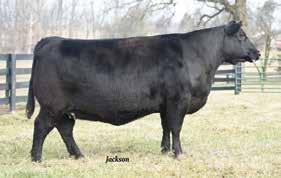


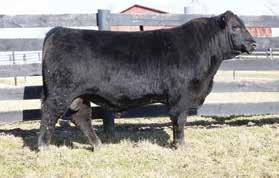
Tamme Valley Cavalry T972. Reg#19557792. Cavalry x EPF Blackcap 5774. Calving ease bull with top 1% $W and 3% WW and YW. +31 milk Burks 518Y Rosebud 206H-Reg#19917798- Awesome Conley Express x Rosebud fall show heifer. Sisters have hung banners and so will this one
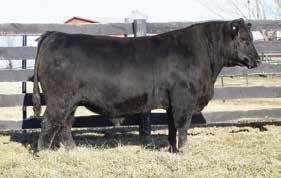
Sponsored by: Great Meadows Angus Association President: Paul Bradshaw • Vice President: Rob Cox Secretary: Pam McGinnis • Treasurer: Earl Lord greatmeadowsangus.com
Matt Jackson: (502) 667-0142
matt@jacksonmarketingsolutions.com jacksonmarketingsolutions.com
Tamme Valley Enhance 986. Reg#19559455. Enhance x M Bar M Blacklass 708. Calving Ease, growth, Maternal. 16 traits in top 35% or better.
GMAA is accepting credit cards.
Sale book mailed by request only or view online at www.jacksonmarketingsolutions.com



